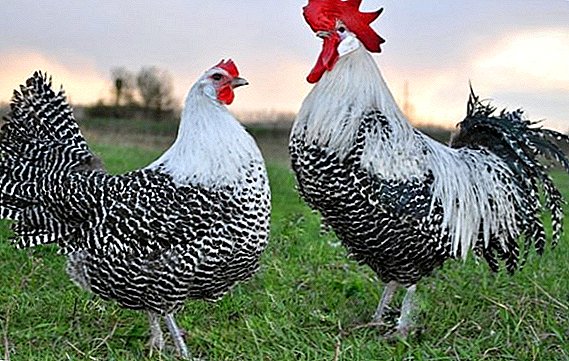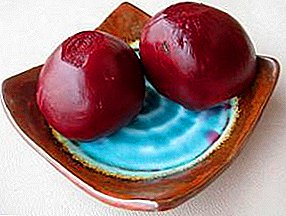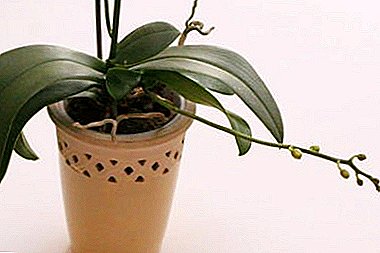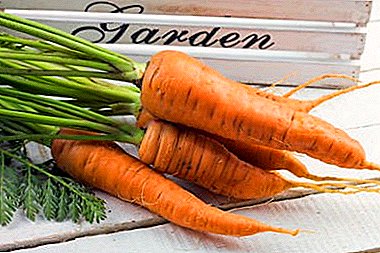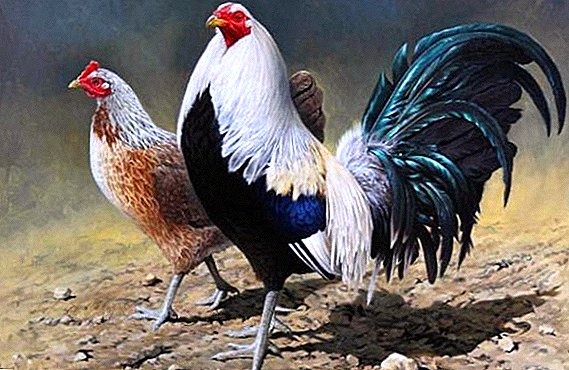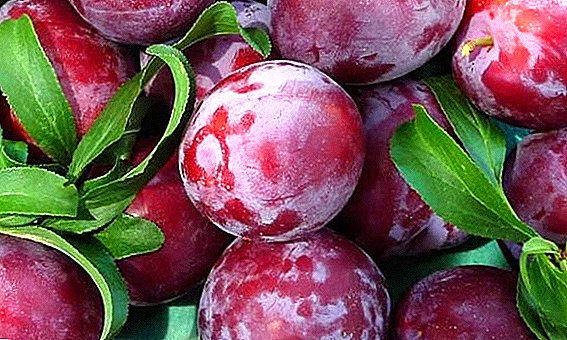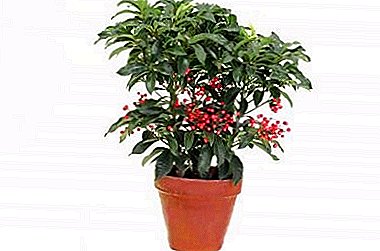
Houseplant Ardiziya gained its popularity with the help of decorative qualities.
Ardizia differs in dark green leathery leaves and fragrant flowers, but its main value is red berries. With proper care, it can bear fruit year-round.
History of
Ardiziya, a typical representative of the Mirsinov family, originated originally in tropical and subtropical forests. Evergreen is often found in Asia, Australia and the Pacific Islands. Its name originates in the Greek language, and literally translates as "arrow" - because of the shape of the corolla of a flower, resembling it.
A photo
Below in the photo you will get acquainted with the appearance of the plant Ardiziya:




Flowering plants
Ardizia begins to bloom in early summer and continues until the end of autumn. During this period, it is important to ensure that the indoor flower receives a sufficient amount of light.
It is also worth it to water more abundantly, since if the soil is too dry, the buds may fall off.
Planting and transplanting
 Young plants are recommended to be replanted every year, in spring time, adults can be replanted every few years.
Young plants are recommended to be replanted every year, in spring time, adults can be replanted every few years.
Transplanting is necessary when the roots completely fill the entire space of the pot. Every six months you need to carefully remove the top layer of soil and add fresh in its place.
And although Ardizia is not picky, you should prefer a light ground. You can take the usual flower primer and add river sand and pieces of charcoal to it. This flower most of all loves slightly acidic or neutral soil.
IMPORTANT! At the bottom of the tank it is necessary to put good drainage so that the roots of Ardizia are protected from waterlogging.
Also, the house grows the following tree houseplants: Ficus "Eden", "Black Prince", "Dull", "Bengal", "Kinki", Cypress "Goldcrest Vilma", Avocados, Lemons "Panderos", "Pavlovsky", some types of decorative coniferous plants and others. Many of them are suitable for creating compositions bonsai.
Growing up
 To grow Ardizia from seeds, you need to take the largest berries (this is done in January), get rid of the pulp, get a bone and plant it in a moist soil, burying to a depth of about 1 cm.
To grow Ardizia from seeds, you need to take the largest berries (this is done in January), get rid of the pulp, get a bone and plant it in a moist soil, burying to a depth of about 1 cm.
From above it is important to cover the pot with a transparent film or glass. The temperature when growing Ardizii from seeds is maintained at 18-20 degrees Celsius.
IMPORTANT! If the bone is too hard, before planting it is necessary to cut it a little and soak in a solution of drugs that stimulate growth.
Seeds germinate in about a month and a half. Grown seedlings are transplanted into small containers. After 2-3 years, seedlings finally formed and become attractive bushes.
Care after purchase
For two weeks after buying the plant, it is necessary to provide her with quarantine, placing her in a lighted and moderately warm room, separate from the rest of the indoor flowers.
At this time every day, Ardizia needs to be carefully examined for the presence of diseases and pests.
Then Ardiziyu recommended transplanted. It is not demanding to the soil, it can grow both in light soils and in heavy ones, the main thing is good drainage.
If during the adaptation period the lower leaves began to turn yellow, then watering should be done often and the pot should be placed away from the battery.
Temperature
Ardiziyu contain at room temperature, in a moderately warm room. In summer, the optimum temperature for this flower is 18–25 degrees, and in winter, by the end of February, it is recommended to lower it to 14–16 degrees.
Such a low temperature is considered optimal for flower buds to be laid more readily. The minimum temperature at which the plant survives is 7 degrees.
Fertilizer
It is necessary to feed an ornamental plant in spring and summer, once every two weeks. When it is at rest, it is not necessary to feed it.
As a top dressing, special fertilizers for flower crops are used.
Lighting
Ardizia grows better in well-lit places, but it is impossible for it to get direct sunlight. It is best to place it on the west or east side, providing it with diffused lighting.
In the summer of indoor flower can be put outdoors. In winter, it is worth adding artificial lighting to prevent Ardizia from suffering due to lack of light.
Watering rules
Ardiziya likes moist but not flooded soil and is very demanding for watering. During the active growth and flowering phase, water the plant regularly, but watering should be moderate. The main thing - to prevent the drying of the earth in a pot.
IMPORTANT! Before watering, make sure that it is really necessary. You can check this by lowering your finger 2-3 cm into the ground. When the substrate dries at this depth, boldly water the irrigation.
In winter, the abundance of irrigation should be reduced, as the plant enters a state of rest. Moisten the soil during this period should be no more than once a week, otherwise mold will form on the surface of the pot due to stagnant moisture.
It is important to use soft, purified water at room temperature and do not forget to drain excess liquid from the pan to avoid acidification of the soil in the pot.
Benefit and harm
It is believed that Ardizia can have a beneficial effect on the human body, it is often used in Chinese medicine.
Its roots, leaves and fruits can be used during the treatment of arthritis, with injuries and snakebites.
Since the berries of this decorative flower are not well understood, their can not be eaten. It is not recommended to grow it in a house where there are small children or animals.
Diseases and pests
Among insects significant damage to the decorative flower can cause shield, aphid and worm.
To get rid of such insects, you need to carefully collect them with a cotton pad moistened with alcohol. After that, it is necessary to treat Ardizia and nearby plants with special insecticides.
If the flower leaves fall, this is a sure sign that it is either watered too much or watered irregularly.
 Light and damaged leaves indicate a lack of iron, in which case they feed iron chelates. With too dry air and with cold drafts, the ends of the leaves will be brown.
Light and damaged leaves indicate a lack of iron, in which case they feed iron chelates. With too dry air and with cold drafts, the ends of the leaves will be brown.
If brown spots have appeared on the leaves, these are signs of a bacterial disease that occurs due to too humid air and damp soil. If there is a lack of light and nutrients in the soil, the leaves may turn yellow.
IMPORTANT! Thickening at the tips of the leaves is not a sign of the disease. This is a sure sign that the flower has beneficial bacteria that improve its growth and development.
Step-by-Step Breeding Instructions
Seeds
The most popular way to grow a garden with seeds. Seed material can be purchased in stores, however, it should be noted that their germination is very quickly lost. Therefore, the best option would be to find ripe berries of the plant and get the seeds yourself.
Cultivation of seed from seed occurs according to the following algorithm:
- Pick up the largest, most beautiful and ripe fruit.
- Carefully separate the flesh from the bone.
- The hardest seeds need to be scarified - damage the shell with a file, which will significantly improve their germination.
- Put the stones in the growth stimulator solution, and hold it for about a day.
- Plant seeds in a mixture of peat and sand to a depth of 1 cm.
- Cover the crop pot with glass or plastic film and place in a warm place.
- After 35 days, the first shoots will appear.
- After the appearance of 3-4 leaves, seedlings should be settled in separate containers.
- After 3-4 months, the seedlings will get stronger and the trunks will increase.
- Young plants will be fully formed in 2-3 years, and will begin to bloom.
ATTENTION! It is best to sow the plant in early March, this will ensure the highest germination rate and further rapid plant growth.
Cuttings
 It is much more difficult to propagate the Ardizia cuttings - they take root for a long time, with difficulty, and require the fulfillment of certain conditions.
It is much more difficult to propagate the Ardizia cuttings - they take root for a long time, with difficulty, and require the fulfillment of certain conditions.
- For the successful rooting of cuttings, choose the spring period.
- It should be cut only lignified tops of the shoots.
- Cut the stems sure to dry for 2-3 days, then dip them in a growth-stimulating solution.
- After soaking the cuttings, spread them out in small containers with prepared soil and place them in a warm place. The ideal temperature for rooting is considered 27-30 degrees.
- Use bottom heating - this will accelerate the process of rooting.
- The next 3-4 months, the seedlings will give roots. To pinch them is optional, the plant branches well enough.
- After rooting, plant the plants in pots with a diameter of up to 10 centimeters and place in a well-lit place.
- The next transplant will be required only with the onset of spring; young branches will need to be moved to larger pots.
Conclusion
In general, Ardizia - unpretentious plant. At observance of the correct leaving it will constantly please with beautiful flowers and large berries.


